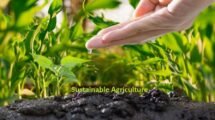According to the ministry of statistics and program implementation on Wednesday, crops’ percentage in India’s agriculture fell to 55.5% in 2019–20 from 62.4% in 2011–12.
According to a report on state-by-state and item-by-item output values, agriculture, forestry, and fishing accounted for 18.3% of gross value added (GVA) at current basic prices in 2019–20, down from 18.5% in 2011–12, but the sector’s share of overall GVA of the country has shown a ‘fluctuating trend over the years.’
Also Read | Women’s contributions to agri sector, national statistics not captured full scope of work.
In 2018–19, it was 17.6%, and in 2013–14, it was 18.6%. Cereals and fruits and vegetables (the two main crop types) accounted for more than 52% of the industry in 2011-12, rising to 55% in 2019-20, according to the ministry.
Cereals had the largest gross value output (GVO) of any crop group in 2011-12, at ₹336,400 crores. According to the research, the GVO of fruits and vegetables in 2019–20 was ₹383,300 crores, over ₹6,000 crores greater than that of grains.
Uttar Pradesh had the highest cereal output in all years, however, its percentage of national output fell to 18.5% in 2019-20 from 18.6% in 2011-12. Madhya Pradesh’s contribution increased significantly to 10% in 2019–20 from 6.2% in 2011–12, according to the report.
India ranks second in arable land (156.07 million hectares), third in grain output, second in groundnuts, fruits, vegetables, sugarcane, and tea production, and first in jute production.
Also Read | Govt aims to convert 6.5 lakh hectares of land to organic farming through PKVY
‘As of 2019, the country had the greatest herds of buffaloes, goats, cattle, sheep and ranked second in cattle, sheep, and seventh in chicken population,’ the ministry stated,’ adding that it is the largest producer of milk, third in egg production, and fifth in meat production.


















Add Comment